With Christmas fast approaching, I was determined to finish off one more piece of work before the end of year which was to get my detachment of Hesse-Hanau Jaegers and some additional Rebel militia added to the AWI Mohawk Valley collection to complete my planned projects for 2021 and to be able to sit down for my Xmas dinner happy that the year was finished off as planned and not have these chaps glowering at me as I passed the painting desk to prepare the year plan for 2022.
 |
| My three units of Colonel von Kreutzbourg's Jaeger force to join the Mohawk Collection in 2021 |
If you are just catching up with my little AWI project that has been running in between Romano-Dacians and Napoleonic ships you can catch up on progress in my post from October, link below, which brought things up to date back then with the addition of more Mohawk Indians, British Regulars and a few more Rebel Militia, which will be getting much more focussed attention in the New Year as I work on bringing General Van Rensselaer's forces up to strength.
 |
In accordance with the 1776 treaty between Great Britain and the German Principality of Hesse Hanau, just under 2,500 troops were sent to serve alongside the British forces serving in America during the War for Independence, which consisted of a regiment of foot, one artillery company, one ranger corps and one light infantry corps, the four-hundred odd men of Lieutenant-Colonel Karl Adolph Christoph von Kreutzbourg's four company Jaeger force.
The first company of the contingent arrived in the summer of 1777 for service in Canada and the disastrous Saratoga campaign, during which the Jaegers saw service at the Battle of Oriskany under Brigadier-General Barry St Leger, that would see the other three companies arrive after the siege of Fort Stanwix had been lifted and the force withdrawing into winter quarters near Montreal.
In a British army that saw riflemen and jaegers as very much a German troop type and with these specialist marksmen having proven themselves in the wars with the French in 1758 in Europe they were a key component of British light forces operating in the broken and wooded terrain of the Canadian-New York state frontier.
In 1777 the then British Governor of Canada, Major General Sir Guy Carleton, disgruntled at not receiving the command of the British Northern Expedition under General Burgoyne resigned, to be replaced by General Sir Frederick Haldimand, who arrived in Quebec in June 1778.
 |
| Northern Department Sphere of Operations 1775- 1783 |
He was responsible for a vast swathe of territory titled the Northern Department extending as far west as Fort Michilimackinac on the straits between Lakes Huron and Lake Michigan and his regular troops amounted to just 4,000 British regulars, 2,000 Germans and three below strength provincial corps, the Royal Highland Emigrants, the King's Royal Regiment of New York and Butlers Rangers.
Frederick Haldimand was a Swiss professional soldier, born in 1718 in Neuchatel, and began his military career in Prussia, later serving in the Swiss Guard in the Netherlands.
 |
| General Sir Frederick Haldimand c 1778 - Joshua Reynolds https://commons.wikimedia.org/wiki/File:Sir_Frederick_Haldimand_by_Sir_Joshua_Reynolds.jpg |
During the Seven Years War as Britain raised provincial troops in the American colonies, with many potential recruits being Dutch and German settlers, the call went out for German speaking officer candidates and Haldimand recieved a commission as a Lieutenant Colonel in the 60th Foot in 1756, serving with distinction through the war in North America and gaining a good understanding of warfare in the region.
Naturally, as a Seven Years War veteran, Haldimand had a great suspicion of the French settlers within his Canadian provinces and the military alliance between the Continental Congress and France only added to those concerns, with the threat of arriving French regulars in Canada only likely to inflame any potential insurrection.
Thus the safety and defence of Canada was Haldimand's first concern and given the province's secondary role in relation to the main British base in New York, with regards to resources, financial and military, he was at first very cautious on spending commitments to raise more troops and military operations over the border likely to cause rebel retaliation.
However by 1780 he was more amenable to allowing Colonels Sir John Johnson and John Butler to launch raids into the Mohawk Valley and beyond, whilst also authorising further loyalist recruiting to complete and enhance the strength of his Provincial Corps.
In the late summer of 1779 the Continental Congress authorised a major expedition against the Six Nations and their dependencies to deal with the threat from British Indian allies in the Mohawk region once and for all, led by two rebel generals of experience, John Sullivan and James Clinton.
 |
| https://www.historyisfun.org/blog/the-sullivan-expedition/ |
The offensive was broadly successful in the destruction caused to the Indian homelands, suffering few rebel casualties, but in many ways would prove a costly failure that left five thousand native stomachs to feed for the British garrison around Fort Niagara, where they fled seeking food and safety and left the majority of the young warriors unscathed and with a smouldering rage; that would erupt on the frontier in 1780 as Joseph Brant gathered 230 eager warriors from the Onondagas, Senecas and Delawares as well as men from the 'mixed-nations' villages of Oquaga and Owego on February 11th to launch attacks along the Mohawk and Delaware Rivers.
After Brant's departure, there were three more raiding war parties in February, two in March, seven in April, four in May and five in June, which left and returned 495 warriors in total, bringing in prisoners, horses, cattle and reports of many victims killed and farms destroyed. Ten other parties also departed in that time and had not yet returned in June with a total of 33 raids made in the period following Brant's initial expedition, that caused one Continental Congressman to remark to another that;
"The expedition of General Sullivan against the Six Nations seems by its effect to have exasperated than to have terrified or disabled them."
In mid-March a loyalist scouting party to Johnstown returned with reports of rebel intentions to force all men of military age to enrol in ranging companies for local defence, with refusal causing those concerned to be sent east as prisoners, their homes destroyed and property confiscated by the state.
 |
| Lieutenant Colonel Sir John Johnson, King's Royal Regiment of New York |
Thus Sir John Johnson was ordered to organise a relief column into the Champlain Valley with a dual mission to raid and destroy rebel property whilst evacuating those men and their families willing to serve the Crown.
Scouts were sent ahead to warn reliable loyalists of the impending expedition and Haldimand involved himself in Sir John's preparations by offering his useful advice based on his Seven Years War experience regarding the carrying of additional black powder, recommending;
'I have found most Effectual . . . putting loose powder into dry Canteens well Corked with a piece of bladder or oiled linen tied over it.'
By the beginning of May the expedition was ready to set out with Johnson's force reaching Crown Point courtesy of the Provincial Marine, at the bottom of Lake Champlain, on May 12th and consisting of:
King's Royal Regiment of New York - 3 companies, 150 men (Sir John Johnson)
Captain Leake's Independent Company- 50 men (Capt. Robert Leake)
53rd Regiment - 36 men (Captain Thomas Scott)
29th Regiment - 36 men
34th Regiment - 36 men
Kreutzbourg's Regiment - 21 men
Mohawk Indians - 130 men
Lake of Two Mountains Indians (Canadian) - 80 men
During the march the troops and Indians covered an arc of some four miles south of Johnstown, burning 120 barns, mills and houses, destroying stores and provisions essential to the rebel cause, targeting with particular attention to property belonging to prominent active members of the 'Mohawk District' Regiment of the Tryon County Militia active in the rebellion, whilst also relieving 143 persecuted loyalists, including women and children, which would enable Sir John to complete his first battalion of the 'Royal Yorkers' and start the build of a second battalion.
 |
| Johnson Hall - Edward Lawson Henry A painting from 1903 depicting Sir William Johnson presenting medals in 1772 to Chiefs of the Six Nations. |
The raid also allowed Sir John to complete some unfinished personal business, recovering his silver plate buried at Johnson Hall, prior to his flight to Canada, with the plate dug up and distributed to trusted men within his companies together with a note of each individual piece carried by which soldier so that their collection on return could be assured.
The focus of attention turned on the Onieda Indians allied to the rebel cause and suspected of infiltration into Crown ranks as well as interfering with scouting parties sent ahead to raise recruits and gather intelligence.
By August 1780, Haldimand was aware of a good crop in the Mohawk Valley that would need to be destroyed before the rebels could have time to remove it and so another expedition was planned to deal with this and the Onieda problem with an expedition to the settlements along the Mohawk Valley
Cautioning Johnson on the need for the utmost secrecy Haldimand consulted him on the best way of achieving this double objective, to which Johnson proposed an expedition assembled at Oswego, moving from there well to the south and avoiding the settlements in the valley before bursting forth from the forest near to Schoharie, surprising the inhabitants and sweeping back along the Mohawk and across Oneida lands, with a secondary escape route should it be necessary north to Fort Oswegatchie.
Officer Commanding: Lt. Col Sir John Johnson
From Niagara
8th Foot Light Company - 35 men
34th Foot Light Company - 35 men
Hat Companies of the 8th & 34th Foot - 80 men
Royal Artillery - 10 men, 1 x cohorn mortar, 1x 3-pdr Grasshopper field gun
Butler's Rangers (three companies) - 156 men
Six Nations Indians - 265 men
From Carleton Island
Kreutzbourg's Regiment - 25 men
1st Battalion King's Royal Regiment of New York (five companies) - 227 men
Leake's Independent Company - 60 men
Total Expeditionary Force - 893 men
The lush farming valley was protected by three 'frontier style' forts, each with a garrison of about 100 to 250 men and the occasional 3-pdr gun with less than 15 miles separating each strongpoint, but Johnson kept his column close and mutually supporting, resisting the temptation to assault the forts but instead burning and destroying property and crops as they moved north towards the Mohawk Valley and masking the forts with mortar fire and sniping as they passed
Johnson's 'Great Raid' would see his force make a twenty day march after hiding the boats used to carry them down to the base of Lake Oneida from Oswego and turning south to likely follow along the Charlotte River, before picking up the Kennanagara Creek that flows into the Schoharie Kill and its major farming district in the Schoharie Valley, being reached on the 16th October after a 250 mile gruelling march along narrow Indian trails.
 |
| Lower Fort above Schoharie Town in the Schoharie Valley, one of three such forts bypassed by Johnson's force in its progress https://theoldstonefort.org/our-museums/old-stone-fort/ |
The march had entailed fighting several skirmishes with the local militia, the investment of the middle fort, while Jonson tried to bluff the garrison to surrender before moving on but, with the conflagration of burning buildings left in their wake, had left a region capable of producing 80,000 bushels of grain per annum totally laid waste.
All the militiamen of Brigadier General Ten Broeck's First Brigade had already been called out to deal with Major Carleton's diversionary attacks along the Hudson Valley and so he turned to Brigadier General Robert Van Rensselaer's Second Brigade consisting of the merger of the Tryon County militia, badly mauled in the Oriskany campaign of 1777, with the Albany militia and directed him to take his 800 men into the Mohawk Valley in pursuit of the raiders.
 |
| Colonel William Malcom |
That day Colonel William Malcom, the senior Continental officer commanding the 1st Regiment of New York Levies in Albany put pen to paper writing to the Acting Quartermaster Henry Glen based in Schenectady;
'It is a most disagreeable situation - our country burning on every side and no means of preventing it - It is almost impossible to get the militia to turn out - at least not in time. . . The [Van Rensselaer's] militia from below [Albany] only crossed the River [Hudson] this morning and are now on their way to your city - for which I have even apprehensions. . . I have sent on 8000 cartridges to you, not knowing what may be wanted. . . If genl. Rensselaer shall want any ammunition be so kind as to spare what he shall want. . .'
 |
| The Battle of Stone Arabia - Gavin K. Watt (The Burning of the Valleys) http://gavinwatt.ca/books-burning-of-the-valleys.php |
By the 19th October Johnson's force was in the vicinity of Stone Arabia following broadly the course of the Mohawk and leaving a trail of destruction as they passed. Earlier that morning Johnson discovered that two men who had deserted the garrison at Fort Stanwix in the spring and joined the Royal Yorkers had left in the middle of the night and gone over to the enemy at Fort Paris near Stone Arabia.
The two deserters informed the militia commander Colonel John Brown that Johnson's force was split on both sides of the Mohawk and that there was an opportunity for his 360 man garrison to advance and attack and destroy the smaller detachment thus weakening the crown force and holding it in place to allow General Rensselaer's pursuing force to come up in support and complete the destruction of the enemy.
Whether Brown believed these men or that he acted on messages from Rensselaer to act as the proverbial 'speed bump' is debateable. Either way he may have believed he had a better opportunity to help delay Johnson by attacking whilst also defending the properties in and around Stone Arabia at the same time, which was the purpose of his garrison.
The result was that Johnson met Brown's smaller force with his two columns re-joined and turned the flanks of the militia force resulting in a running battle during which Brown and about 40 of his men were killed in the ensuing rout.
 |
| JJ's Wargames- AWI Mohawk Valley Collection, Additions |
I discussed briefly this final battle of Johnson's Great Raid in my last post, in the link above, that culminated in the Crown force breaking contact and successfully progressing back to Oswego and will take time to look at this battle in a bit more detail in my next post, as work progresses to build the units representing Van Rensselaer's Tryon and Albany County Militia, together with other associated units deployed during the campaign.
If this particular part of the American War of Independence sparks your interest and I would argue makes an interesting change from other small-war operations such as those in the south then I can recommend no better book to add to your Xmas list this year than Gavin K. Watt's, The Burning of the Valleys, which I refer to again and again while working on this collection.
In addition all the figures I am using are from the great range produced by the Perry's and with the recent release of their skirmishing British 'Light Bob's' and Butler's Rangers, now's as good a time as any to start work on a New Year project.
 |
| http://gavinwatt.ca/books-burning-of-the-valleys.php |
Talking of books, I'm hoping to squeeze in a final book review for 2021 from my ancients library and I should have a Xmas game report to show you as I get together with friends in the break to enjoy some Wild West action before taking the time as usual to look at the year gone and the plans for 2022, so hopefully lots of chat to entertain over the Xmas break here on JJ's.
Sources consulted in this post:
The Burning of the Valleys - Gavin K. Watt & James F. Morrison
King's Men, the Soldier Founders of Ontario - Mary Beacock Fryer




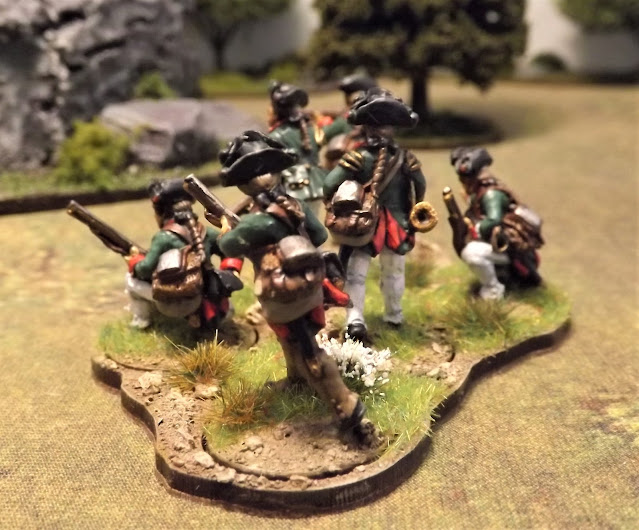
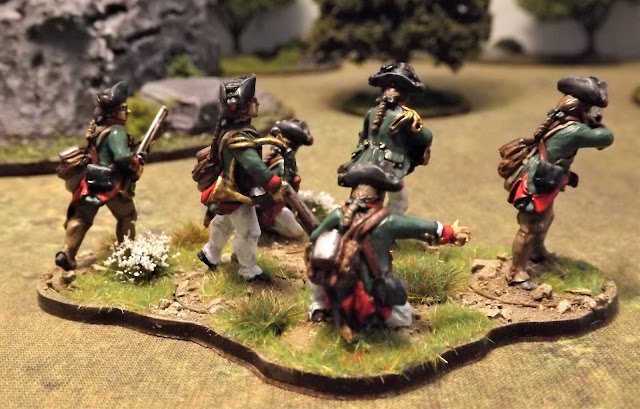






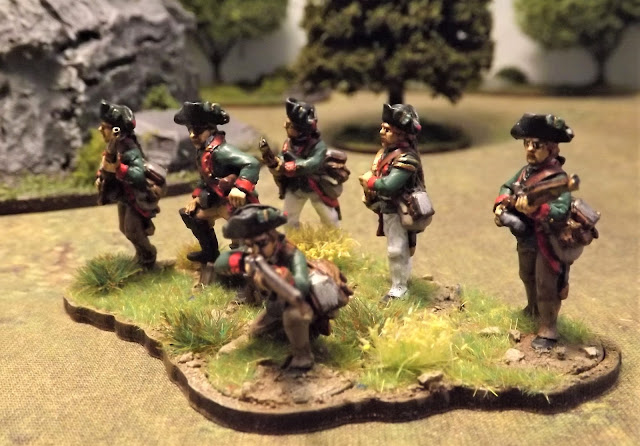



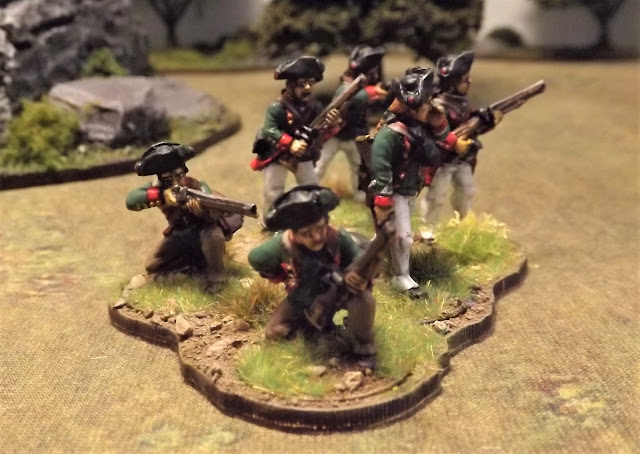
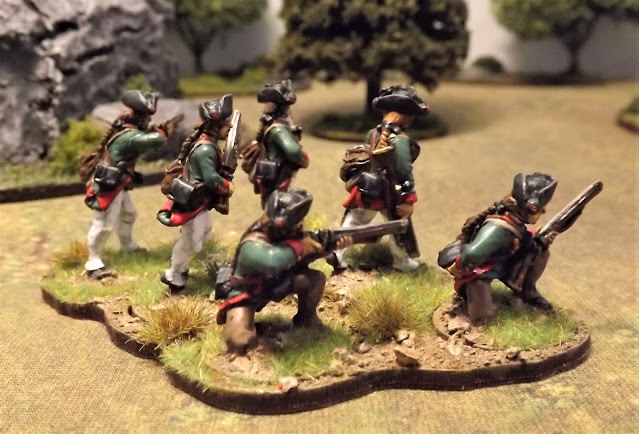

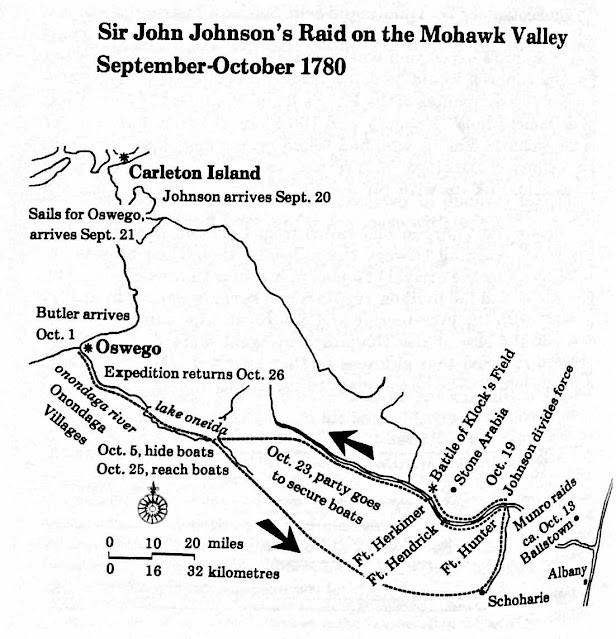


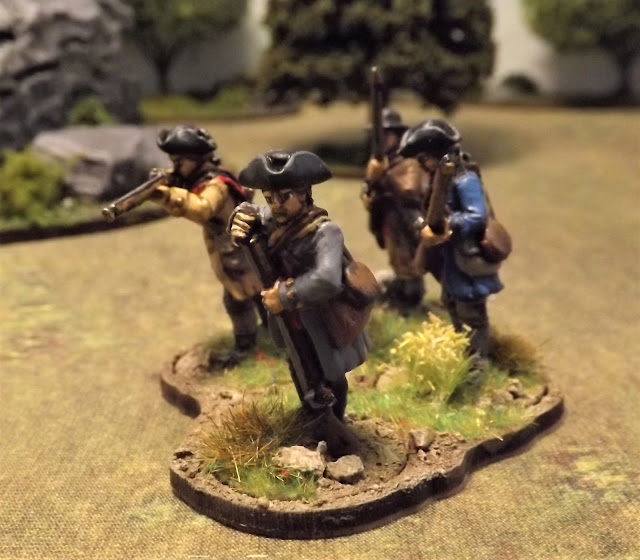



Thanks for posting JJ an interesting campaign.
ReplyDeleteMerry Christmas and happy gaming.
Stay safe,
Willz.
Hi Willz,
DeleteMy pleasure and glad you enjoyed the read.
Happy Xmas and a Great New Year.
Cheers
JJ
A most interesting and enjoyable read backdropped with your superbly painted Germans. Many thanks for your post JJ.
ReplyDeleteHave a happy Christmas!
Rod
Hi Rod,
DeleteThank you, that's very kind. It's always great to know that others find this stuff interesting and I hope thought provoking enough to inspire some collecting, painting and playing.
Just sharing the love!
Have a great Christmas and New Year
JJ